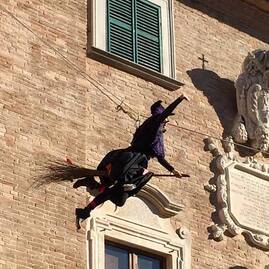 On the 6th of January every year, La Befana, the Italian witch, delivers treats to children across Italy, just as Babbo Natale does on Christmas Eve. But la Befana is a witch (albeit, a good one) who travels by broom, magically swishing down chimneys and leaving presents in children's pillow cases, stockings and shoes. In her hometown of Urbania--in the region of Marche--50,000 Italians celebrate this good witch's arrival with literally tons of desserts and foods. Throughout the streets and piazzas, you will find theater performances, fire-eaters, la Befana on stilts and also be amazed when she flies overhead (on a cable). The Festa Nazionale della Befana gives an alternative insight of holiday celebrations... it's perhaps one of the best festivals of the holiday season. --GVI Click on the photo above to watch a video of this festival
Bergoglio is a common Italian surname from the Piedemont region of Italy, although in this case, this man is called Jorge (Giorgio, in Italian) and he was born in Argentina. Yes, that Jorge Bergoglio, also known as Pope Francis. In the last few months, there has been a uprising and controversy when a video went viral--of Pope Francis pulling his ringed hand away from people as he meets. People are angry because HE isn't showing any respect for the Church or its traditions. The video that caused this controversy was from video footage of meeting of pilgrims after the Pope celebrated Mass in the Holy House in Loreto, Italy, on March 25, 2019. In this short video, Pope Francis appears to pull his hand away each time a person approaches to greet him and kiss his hand or ring. But this video didn't exactly show everything that happened that day. In fact, when approached by nuns, in every instance, he allowed them to kiss his hand or ring. But, when it came to the lay people that day, he pulled his hand away from each... (Watch the complete video on this page) Baciamano The custom of kissing the ring of the pope or a bishop has been a gesture of respect in the Church for longer than can be remembered, but likely started in the late Middle Ages. In fact, when I was a child, I remember having to kiss our bishop's ring whenever he visited our church. This ring-kissing is called baciamano (in Italian, literally "hand kiss”), but in practice it refers to kissing the ring worn by any bishop, but especially the Papal Ring of the Fisherman worn by every Pope. Each Pope chooses, designs or selects his own ring to wear during his Papacy. The Fisherman’s Ring is one of several rings typically worn by the Roman pontiff. The ring takes its name from its image of St. Peter as a fisherman, which became the standard design around the mid-15th century. The first record of the ring’s use was on two letters of Clement IV in 1265 and 1266, used as a wax seal in private letters in place of the official lead seal used for solemn papal documents. In 1842, use of the ring and wax seal were replaced by a stamp, but each Pope still receives a unique Ring of the Fisherman at the start of his papacy, which is then destroyed soon after his death. Pope Francis doesn't always wear the Papal Ring, and while outside of official Papal ceremonies, Francis is typically seen wearing only his episcopal ring. It is customary to kiss the ring of any bishop, and being that the Pope also holds the title of Bishop of Rome, he is also technically a Bishop. Kissing a Bishop's ring is done out of reverence for his dignity as a successor of the apostles, and the hand of a priest, as it has been anointed with chrism to consecrate the Body of Christ. The custom of baciamano started to change with St. Paul VI in the last decades of the 20th century, when he eliminated other forms of showing Papal obedience and subservience, such as kissing the pope’s foot, shoulder, and cheek. Kissing the Pope's ring was starting to fall from favor. In the past, one typically bowed while kissing the ring, but in later years, the bowing has also started to disappear.
Some Vatican insiders claim that Francis retreats from traditional Vatican Court Customs, wanting to further simplify the ceremonial by omitting the greeting of genuflection and kissing his ring. He sees this as a lessen to the people of his Church that he is also a common man, and only Christ Himself is worth of such respect. He will still allow those "of the cloth", such as nuns and priests to kiss his hand/ring (as is seen in the unedited video of the event in question). He is respecting the internal hierarchy of the Catholic Church in doing this. The Pope is in fact, their leader. But he does not wish everyday people to treat him as if he were some sort of religious idol. He is an "everyman Pope". So he often pulls pack his hand as a lesson for us not to idolize him. Other Reasons for Pulling Back His Hand Still others, point out that the Pope is a senior citizen, and as such, has a weakened immune system. It's prudent to lessen the contact with parishioners, especially during events when the Pope is likely to have thousands try to kiss his hand. Even politicians on their political hand-shaking and baby-kissing campaigns have their aides squirt their palms with Purell after each public event. Anecdotally, I will confess to changing my habits when food shopping when my son was a toddler, riding in the supermarket cart while I shopped. In the first couple of years, it seemed both of us were getting sick a lot... 4-6 times a year we would catch colds. But then I started to use the antiseptic wipes available in supermarkets to wipe down the handle of our shopping cart, and we magically stopped catching colds! I think we can all give the Pope the benefit of doubt on this matter. He is an older man and can catch colds like any other mortal human. He is also a humble Pope and doesn't like being treated like a king or monarch or even the embodiment of the Christ Himself. I think this can be a teachable moment. Use wipes at the supermarket --my lesson. The Pope is just a man, like all others --Francis' lesson. We are all children of God while we are in this mortal form. Germs DO exist and are transferred instantly by touch. There, I've said my piece. Now, does anyone have a Wipe? --Jerry Finzi 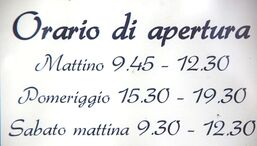 "Orario" means "hours" "Orario" means "hours" Most Italians work long hours. In the average business, their weekday hours are 9.00 am (9:00) to 1.00 pm (13:00) and from 2.30 pm (14:30) to 6.00 pm (18:00), from Monday to Friday. They use the 24 hour military clock. Many people will work well after 6.00 pm, especially true for managers and entrepreneurs. This is one of the reasons they take long lunches--called riposa--typically from 1 pm until 3 - 3:30 pm. Even most churches are closed from noon until 3 pm. There are many jobs which have their workers come in from Monday through Saturday, but they only work from 8.00 am to 2.00 pm. When a business is closed on Saturday, they might also add a few afternoon hours for their employees. According to Italian labor laws, the number of hours worked in a week can reach a maximum of 40. The average time, including overtime, cannot exceed 48 hours. Workers in Italy are guaranteed a minimum of 4 weeks paid days off for vacation and holidays. Some unions negotiate even longer periods of paid vacation/holiday days off. Lunch breaks are typically shorter in large cities and restaurants are open during the lunch hours. In smaller towns, even restaurants will be closed during riposa because most people prefer to eat at home. (But food is available at "bars", which are open). In almost all cases, many shops, even in large cities, will be closed for riposa with their hours listed on the door. In addition, during the August holiday season of Ferragosto, when workers take from 2-4 weeks off for holiday, you might see a sign on shop or restaurant doors saying "Chiuso Per Ferie" (Closed for Vacation) with a date when they will return from vacation. Most Italians take a two week vacation (called Ferragosto on August 15th) either before or after August 15th. Most large industries are closed during August and many museums and restaurants might also be closed. Many people take the entire month to rest and relax before returning to work and school on September 4th. The other period of time when holidays might affect normal business hours is the period between Christmas, New Year's Day and the Epiphany on January 6. Since Italy is a Catholic country, many national holidays coincide with religious holidays.
In addition, all Italian cities celebrate the patron saint as a legal holiday. All businesses are closed on...
 Schillizzi Schillizzi Enzo Schillizzi (b 1955 - d 2009) lived in the small Albanian-Italian village of San Costantino Albanese above the banks of the Sarmento River. The artist spent almost all his life in this small village just outside of Potenza, painting the local life and culture in murals all around the area. His work focused on the cultural symbolism of arbëresh tradition and folklore, especially on religious rites, for example, illustrating Nusazit, the pyrotechnic puppets of the saints day of San Constantino Albanese. Proud of the region's heritage, he recorded his impressions of the romantic and violent history of Basilicata and the briganti, robber/rebels who ran rampant during the post-unification period if Italy. Other subjects were his own interpretations of of painters such as Velasquez and Picasso. Some works are childlike, with indeed a Picasso-esque loose hand, while others show his extraordinary skill as a draftsman. After his untimely death, in July 2009, an effort has been made to research, document and restore and preserve his wonderful murals in addition to paintings privately owned. His colors often remind the viewer of the muted and natural palette from Basilicata itself--wheat, the varied tones of greens from the mountains and valleys, and the more vibrant colors of sky and flora. This research has been possible through the efforts of family and friends, who helped to identify and search out several paintings and gain permission of the owners to allow photographing them for posterity. Despite his works being dispersed in various places, a significant number still remain in San Costantino in private collections houses and in public spaces. Some his more complex works remind me of the work of Mexican muralist Diego Rivera while others have a mix of abstract and cubism in their compositions. After seeing his work, I'm convinced that his imagery would be well suited to ceramics and mosaic tiles. The town of San Constantino is blessed to have much of his work on public display, honoring their wonderful heritage. --Jerry Finzi 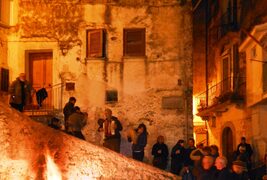 Procession in Itri, Lazio leading their way toward the bonfire Procession in Itri, Lazio leading their way toward the bonfire In Puglia, Basilicata, Lazio, Umbria, Lombardy and other regions of Italy, many towns and villages celebrate la Festa di San Giuseppe (March 19th) in a unique way... by lighting Fuochi nella Notte, fires of the night--or bonfires. The bonfires and festivities are on various days (depending on the town), from March 17th through the 19th. Known by different names, the bonfire festival might also contain the words Torciata (torch), Fiaccolata (torchlight procession), Falò (fire). For example, in Tuscany's Pitigliano, the event is called Torchiata di San Giuseppe with people dressed in medieval costumes and a procession of men and boys dressed in hooded monk's robes carrying flaming reed torches that will help build the bonfire. After the bonfire has burned down to ashes, tradition calls for people to collect and keep the ashes, ensuring their good luck in the coming spring. As with other holidays beginning in the New Year and throughout lent, the lighting of bonfires has a long history going back to the time of pagan worship. Through the last 2000 years, the activity has morphed into a Christian tradition. This tradition also coincides with the need to burn the trimmings from vines, olive trees and other woody crops. While Christians claim the fires are a representation of the good father, Saint Joseph, striving to keep the infant Jesus warm during winter nights, others say the tradition is from the ancient Romans celebrating the dark winter being overtaken by the light of spring. Many modern observers say it's just another way for fun-loving Italians to throw yet another party, for as with most festa and sagre, there is always the food, and a great sense of community.
And if the truth is to be told, Italians love bonfires so much, you will also come across other Fuochi on other saint day festivals across Italy. --GVI Maria Giuseppa Robucci, better known as Nonna Peppa in Italy, is currently the oldest living person in Europe. Nonna Peppa has yet another birthday coming up... on March 20th she will turn 116! This centenarian lives today in Apricena, Puglia with her daughter Filomena and her family. She was born in 1903 in nearby Poggio Imperiale where she married farmer Nicola Nargiso and bore five children, nine grandchildren and 16 great-grandchildren. She managed a local bar along with her husband for many years, is very religious and claims to have known Saint Padre Pio personally. For the last few years she holds the title of honorary mayor of Poggio Imperiale, making her the oldest mayor in Italy. Her secret to longevity? Nonna Peppa doesn't drink or smoke. --GVI Today, March 8th, is International Women's Day and in Italy it's the time when mimosas are blossoming with their golden color. All across Italy women are presented lovingly with a bouquet of mimosa flowers to say "Thank you"... thank you for being Mama, that you for being my sister, thank you for being a great daughter, thank you for being a fantastic co-worker, or thank you for being a wonderful wife. March 8th is called La Festa delle Donne in Italy. While in Italy the day has become almost like Mother's Day here in the States, the observance started in 1909 by the Socialist Party of America, and was held in New York City after a sweat shop factory burned to the ground, killing 145 workers--mostly young women who were underpaid and had to work in unsafe conditions. This event and the observance was the de facto birth of the modern Women's Movement. Sadly, in Italy and around the world, women are still struggling to achieve equal pay for equal work, among many other issues. The tradition of a gift of mimosas dates back to 1946 when the feminists, Rita Montagnana and Teresa Mattei, came up with the idea of women offering the bouquets as a symbol of mutual respect, sisterhood and support. Mimosa was one of the few flowers in bloom on the date. The Mimosa also represents strength and endurance, being a tough plant that can survive adverse conditions in Italy. Oddly, being originally a Socialist observance, it seems that in Italy, the Festa delle Donne has been commercialized... another day where bouquets of Mimosa tied with yellow ribbons are sold in supermarkets, bars and tobacconists all over Italy. It's become expected that fathers, sons and husbands also give the flowers to the women in their lives. The commercialization of La Festa delle Donne has made it more like Mothers Day and might be losing some of its original meaning based on solidarity of women's issues. Even chocolate companies offer their dolci in yellow packaging. In some parts of Italy the Festa is celebrated on the closest Sunday to March 8th, and special events are held, such as a procession of mimosa decorated gondolas in Venice and a regatta for female rowers. . --GVI The commercialization of the Women's Movement in Italy From Grand Voyage Italy to all Women... Auguri!
Support each other and keep up the fight for equality!  If you look in my cellar during mid-May of any year, you will find a couple of dozen young tomato plants under my grow light, nearly ready to be planted out in my raised vegetable beds (after fear of frost is gone). My mind always fills with thoughts of tomatoes in this time of year, with hope that there will be a good yield for our little famiglia. If I say, "tomato sauce" you think of Italian food, right? If I say "home grown tomatoes" you might think of Vito Corleone playing with his grandson in his garden in that final scene in his life. If I say "pizza" you picture a round crust with cheese and tomato sauce. That red color emblazoned in the minds and hearts of Italians everywhere (even though heirloom tomatoes come in many colors). Some say that Il Tricolore (the tricolor flag of Italy) represents the hills of Italy with green, the snow capped mountains with white, and the blood spilled from the wars of independence by red. But others in la Cucina Italiana would argue that the green is for pesto, the white for besciamella and the red for salsa pomodoro found in tri-color lasagna... or that the flag represents the simple but wonderful insalata caprese: green for basil, white for mozzarella, and the red for ripe tomatoes. In any case, you might say the red in Il Tricolore represents the true blood of Italy--the tomato.  The Wild Tomato of Peru The Wild Tomato of Peru But how did the tomato become such a strong part of Italian culture? It is not indigenous to Italy, or Europe for that matter. The tomato was first "discovered" by the Spanish Conquistadors while exploring and then conquering the Americas. The Spaniard, Hernán Cortés, conqueror of Mexico in 1519, returned home and brought with him a cargo of Aztec tomatoes. The tomato most likely originated in the Andes mountains of Peru and spread sometime in the distant past to most parts of South and Central America and eventually on up to Mexico. In fact, it was the Incas who first cultivated tomatoes about 1000 years ago, eventually trading seeds to Aztecs and Mayans to the North. Most botanists consider the tiny, scraggly bush Solanum Pimpinellifolium (or "Pimp") as the ancestor of all modern tomatoes, itself becoming an endangered species. The odd thing is that the tomato became popular in Europe long before it came to be used in North America. Colonial Americans thought of the tomato as a poisonous plant, after all, it's a close cousin or Nightshade, a well know toxic vine, and in fact, the leaves and vines of the tomato plant are fairly toxic. 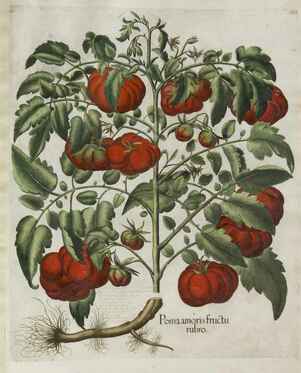 16th century botanical illustration 16th century botanical illustration It was during the 1500s that Columbus and other explorers introduced the tomato to Europe, but 200 years of skepticism had to pass before the tomato gained acceptance there. It was feared that one touch of a tomato on the lips would kill you. One likely catalyst for its popularity in Europe, especially with the wealthy and elite, was the rumor that it was an aphrodisiac. The general population more than likely heard about this new fruit and saw that the Barons and Dukes behind the castle walls were flourishing, not falling down dead. One can imagine that the trash middens where refuse from the castles, chateaus and villas were thrown, became a great source of distribution for the tomato plant. As anyone who grows tomatoes knows, tomatoes are prolific and seeds can spring up anywhere. Leave a fruit on the ground and chances are good you'll have more tomatoes next year. Leave a tomato on the kitchen counter and the seeds might eventually sprout right out of its own skin.  Self-Sprouting Tomato Self-Sprouting Tomato Little by little, the peasants discovered gnarly vines growing wild with attractive red or yellow fruits that were attracting wild life. (Chipmunks love them in my garden!) "Why not give them a try? The birds, squirrels and rabbits aren't dying, after all." Presto... a free, easily grown source of vitamins and amazing flavor. It was easy to save seeds and cultivate a very large harvest from even a modest number of plants. The word tomato is derived from the Aztec word xitomatl, shortened in Europe to tomatl. The French originally called the tomato, pomme d’amour (love apple) before calling simply la tomate. Perhaps they changed the name when the aphrodisiac claims failed to yield any effect. In Italy it was pomi d’oro (golden apple) which today becomes il pomodoro. Tomatoes do come in a wide variety of colors, including golden yellow, but along with tomatoes, the tomatillo also came from the Americas--many of which are also yellow. In Italy, the tomato more than likely prospered because of its near-tropical climate. The tomato can be grown all year long in tropical temperatures. It makes sense the Spanish had tomatoes first, after all, they sponsored the Columbus and Cortes explorations. In this way, Spaniards actually led the way, "teaching" Italians to fry tomatoes up with eggplant, squash and onions, and used the dish as a condiment on bread and with meats. The cuisine of Southern Italian peasants, who often lacked meats and other proteins on a regular basis, developed into a mostly vegetarian diet in which tomatoes and olive oil, spices and vegetables were and eaten with bread, rice or polenta. The first time the pomi d'oro is mentioned by name in Italy was in 1548 in the household records of Cosimo de’Medici, the grand duke of Tuscany. His house steward presented a basket to “their excellencies”. The Duke had no idea what was inside, only that it came from his Florentine estate at Torre del Gallo. The records describe the scene, “And the basket was opened and they looked at one another with much thoughtfulness.” After the event, the house steward wrote to the Medici private secretary to tell him that the basket "arrived safely". But as far back as 1692, tomatoes were used as ingredients in a cookbook from Naples, Lo scalco alla moderna. The author obviously copied details from Spanish tomato sauce recipes ("alla spagnuola"), including simple ingredients like minced tomatoes and chili peppers. Curiously, he did not recommend using the sauce specifically with pasta: "Take a half a dozen tomatoes that are ripe, put them to roast in the embers, when they are scorched, remove the skin diligently, then mince them finely with a knife. Add onions, minced finely, to discretion. Hot chili peppers, also minced finely. Add thyme, in a small amount. After mixing everything together, adjust it with a little salt, oil, and vinegar. It is a very tasty sauce, both for boiled dishes or anything else." Italian nobility at first used this new, jewel-like fruit merely as a tabletop decoration, gradually incorporating it into their cuisine by the late 17th and early 18th century. They cherished their beauty, and experimented with selective breeding, managing to create tomatoes of many colors and shapes  It took another 200 years for the tomato to become the national treasure is it today, but by the late 1700s, the peasants of Naples began to put tomatoes on top of their flat breads, creating something very close to the modern pizza--essentially turning pizzas from white to red. Tomatoes gained popularity, especially with the elite of Europe and Americans taking the Grand Tour, and soon pizza attracted tourists to Naples, tempting them into the poor areas of the city to sample the new treat. Pizza was born. Soon after taking a Grand Tour himself, Thomas Jefferson, being an expert farmer and a culinary expert, brought tomato seeds back from Europe. Jefferson grew tomatoes in his expansive Monticello garden, with his daughters and granddaughters using them in numerous recipes including gumbo, soups, pickling and especially for ketchup (the common use for tomatoes in the 19th century). In an 1824 speech to the Albemarle Agricultural Society, Jefferson’s son-in-law, Thomas Mann Randolph, claimed that ten years before, the tomato was barely known, but by 1824 "everyone was growing and eating them". Slow but sure, people were taking notice of this special fruit. 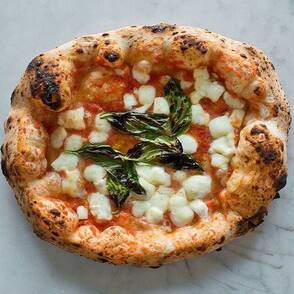 Pizza Margherita, the birth of modern pizza Pizza Margherita, the birth of modern pizza In the same time period we find the first recorded evidence of tomatoes used in sauces and preserved condiments and pastes. In the 1800s, in Naples a recipe was written about pasta al pomodoro, the very first mention of tomatoes being married to pasta. In 1889, after Italy became one nation, the King and Queen of Italy found it necessary to visit the former kingdom of Naples to appease the citizenry who disliked their loss of independence. Queen Margherita was bored with the same old French cuisine that they were eating everywhere they went--as was the custom in all of Europe. She called for the most famous pizza-maker in Naples, Raffaele Esposito, and commanded that he make pizza for her. He brought three types: pizza marinara with garlic, pizza Napoli with anchovies and a third with tomato sauce, mozzarella and basil leaves. She fell in love with the third one and Esposito named it after her--Pizza Margherita. A short time later, the Queen sent her emissary with a thank you note, which still today hangs on the wall of Pizzeria Brandi, still run by his descendants. Pizza--with tomato sauce--was to become more popular than ever after the Queen's royal recommendation--the equivalent to Royal Yelp nowadays. Emigration to the United States did more to increase the popularity of the tomato than anything else in history. Because of the climate in Italy, tomatoes became a big crop, even small farmers produced an excess of the sweet fruits. A need developed to preserve them, and to create new markets. The only foods that may be safely canned in an ordinary boiling water bath are highly acidic ones--coincidentally, tomatoes are naturally high in acid. Sun drying tomatoes and storing them in olive oil was also a proven way to preserve large stores of tomatoes, as long as no fresh herbs or garlic were added, the method a safe with a long shelf life. During the mid-1800s the science of canning started to develop and improve, allowing this new cash crop to find its way to distant markets. By the end of the 19th century Italians were already using tomatoes in their recipes and as a condiment. When Italians emigrated to America, they wanted to have products that reminded them of home... canned tomatoes filled that need, along with olive oil and other specialty imports. Italians at home and expats in American developed import-export businesses to give relatives and other their compagni jobs based on their new found wealth in America. In Italy, exporting companies were popping up, especially in the Naples area. By the time World War I rolled around, even the Italian Army experimented with canned ravioli, spaghetti alla bolognese and Pasta e fagioli, the inclusion of acidic tomatoes in the recipes aided in the cans' shelf life. Italian grocery stores stocked these products in Little Italy neighborhoods in New York, Philadelphia, Chicago, Boston and New Orleans. Click HERE to read Part 2Italy is know for passionate people, and Antonio La Cava from Matera is one of them. He's passionate about sharing the glory of books with children. La Cava carries a telling surname, as Matera is the city of caves, or Sassi, when people have been living in cave homes for tens of thousands of years. Retired as a schoolteacher after 42 years but couldn't stop spreading knowledge to il bambini of his region of Bacilicata. So in 2003 he bought a used tre-ruote (three wheeler) Ape mini truck and created his Bibliomotocarro, a portable library that houses 700 books. La Cava travels over 500 kilometers each week to 8 regular stops on his route. The children know of his arrival by the sound of organ music coming from his unique vehicle. The children run to greet him as if some TV star is showing up. He also funds his efforts, pays for fuel, repairs and buys the books from his own pocket. His passion for the love of the written word will be carried on--certainly by the many children on his route. --Jerry Finzi “A disinterest in reading often starts in schools where the technique is taught, but it’s not being accompanied by love. Reading should be a pleasure, not a duty.” --Antonio La Cava |
Categories
All
Archives
January 2024
|

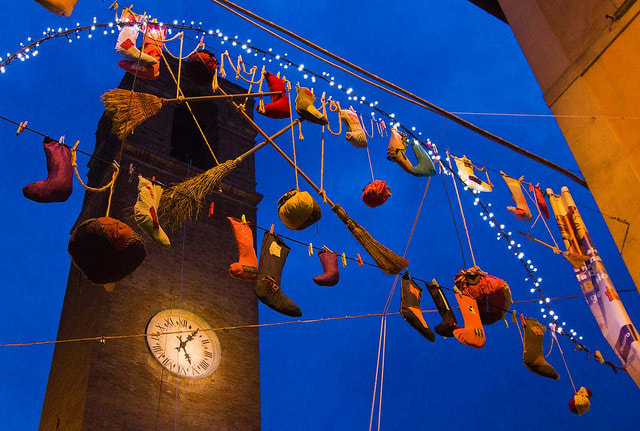
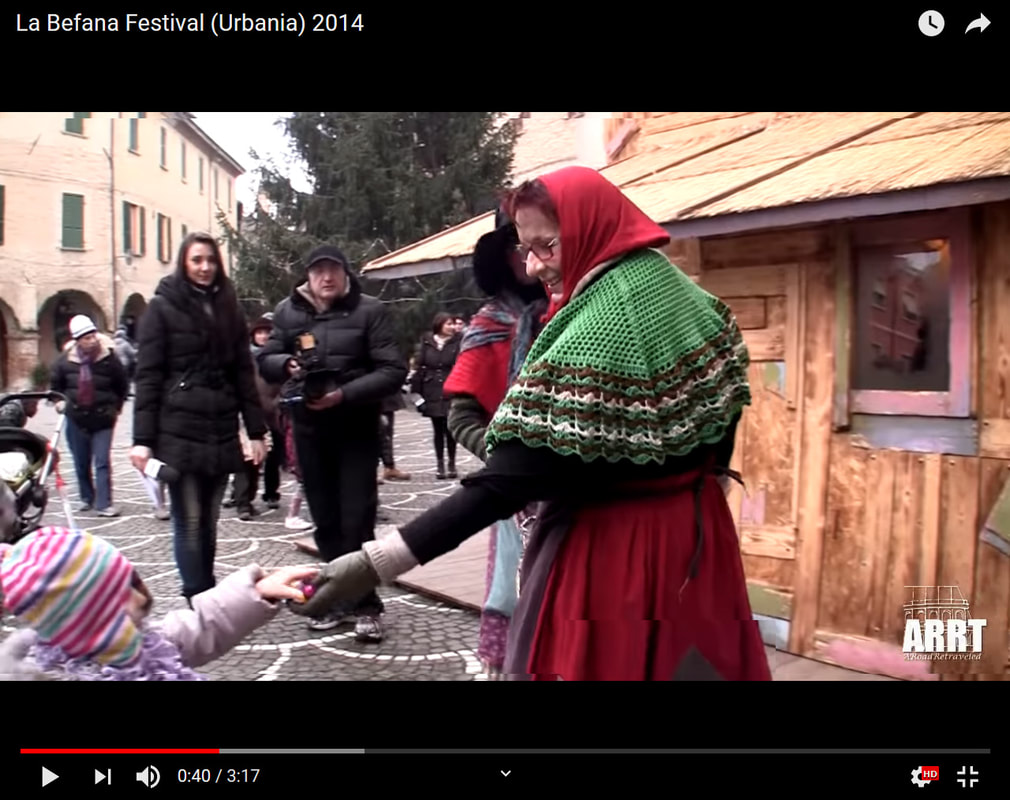
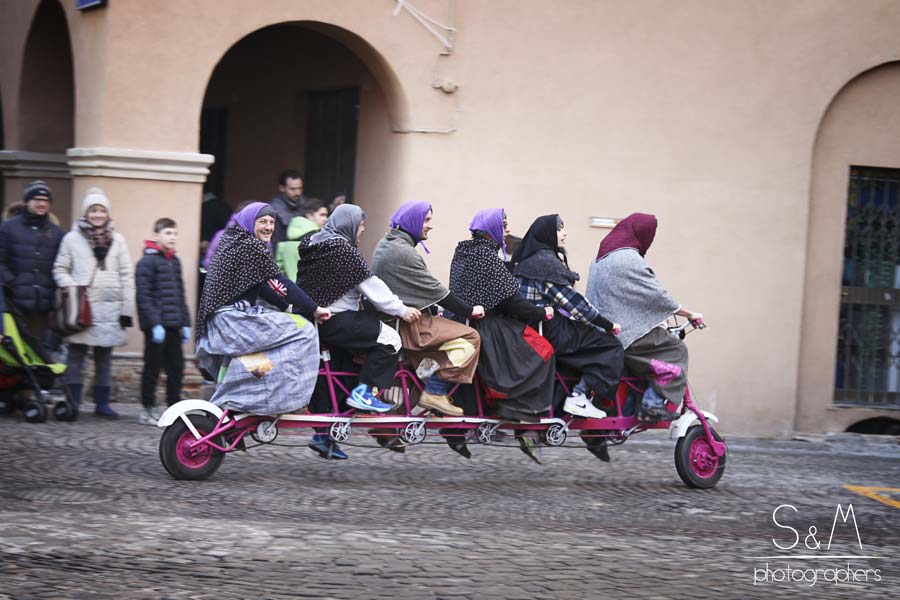

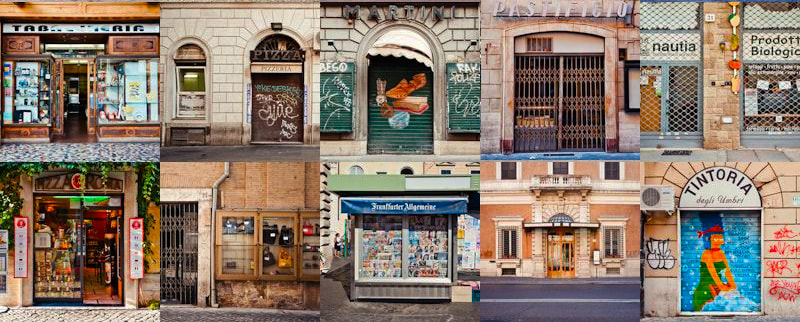
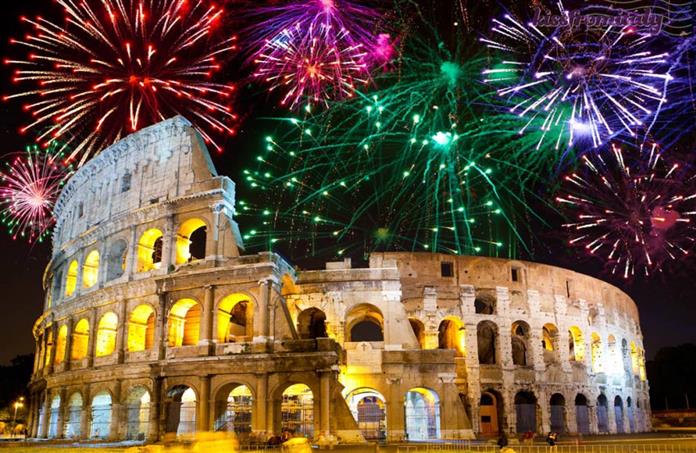
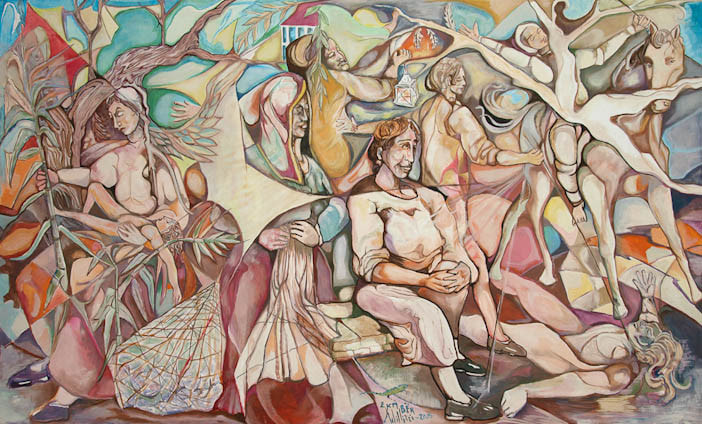
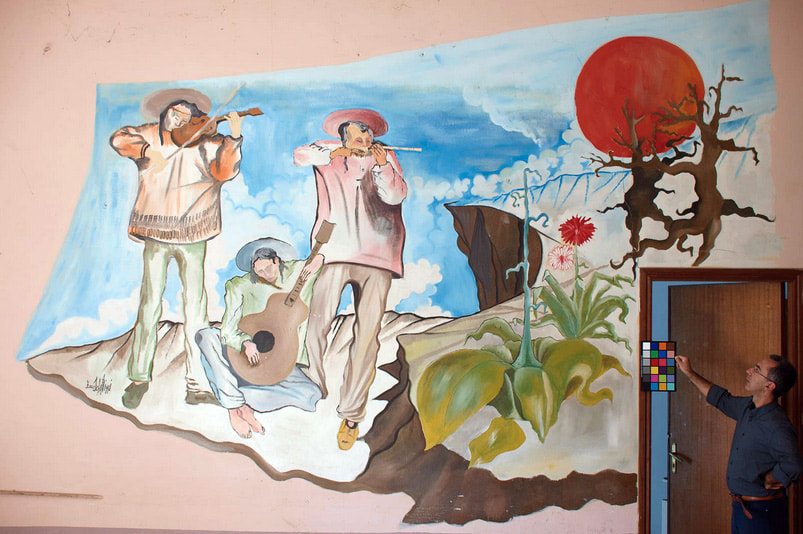
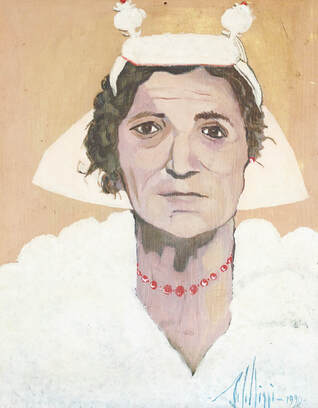
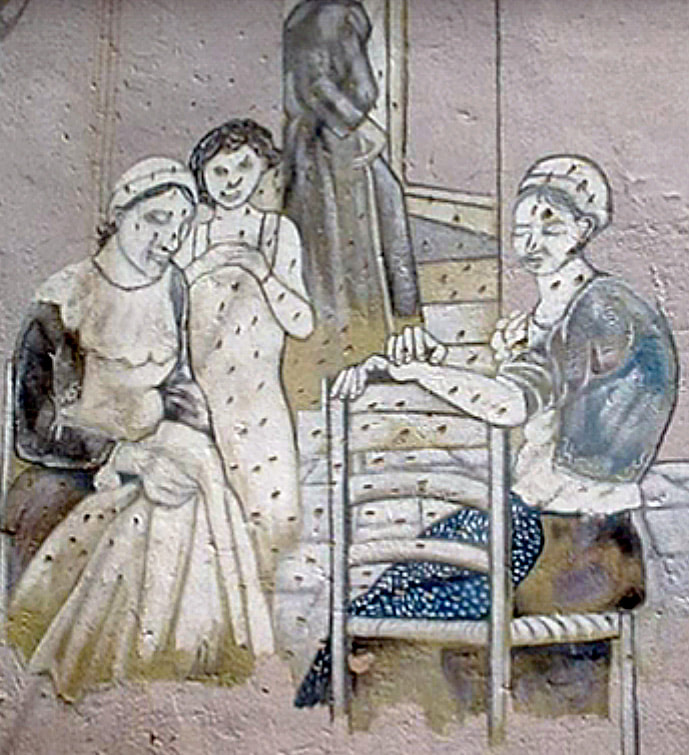
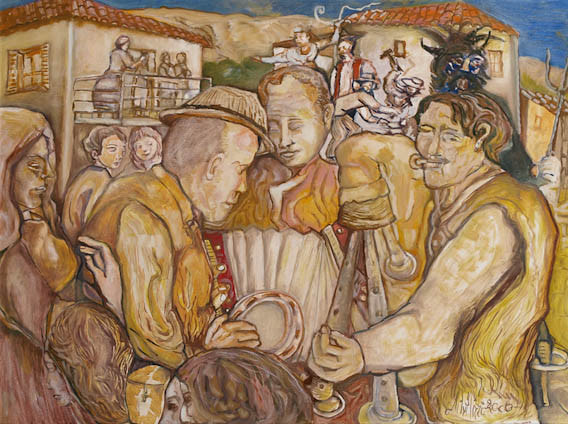
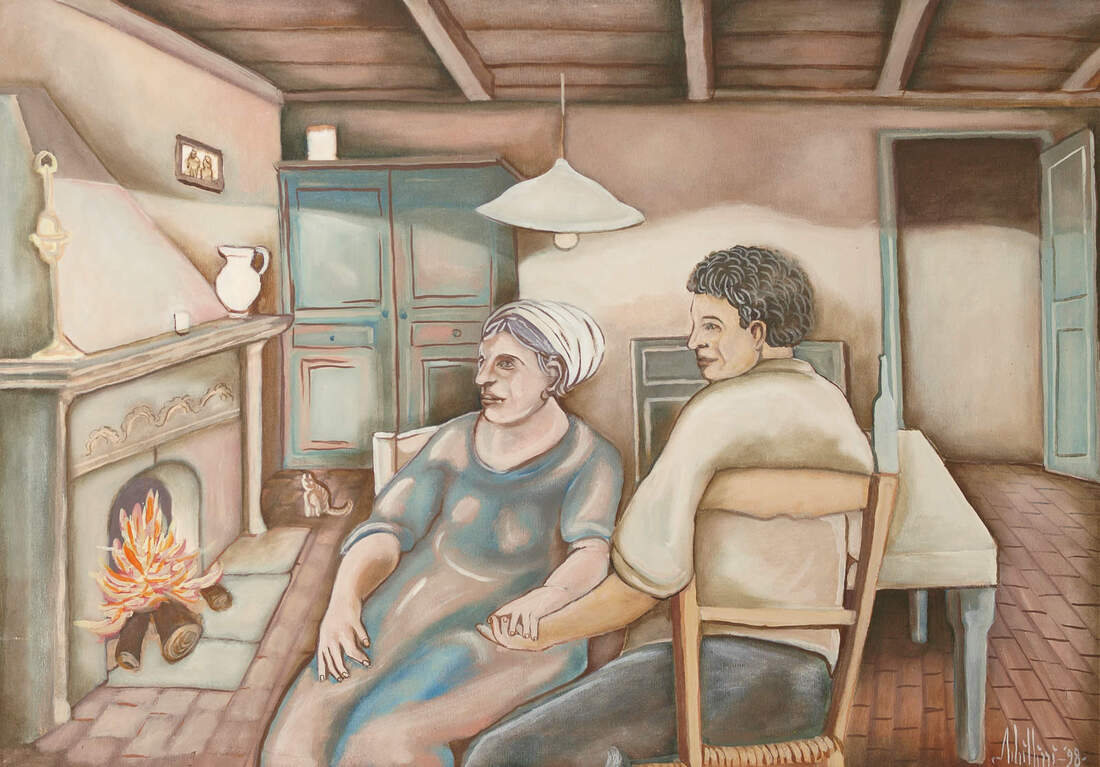


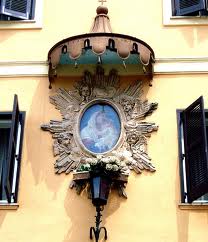
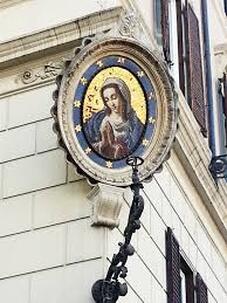
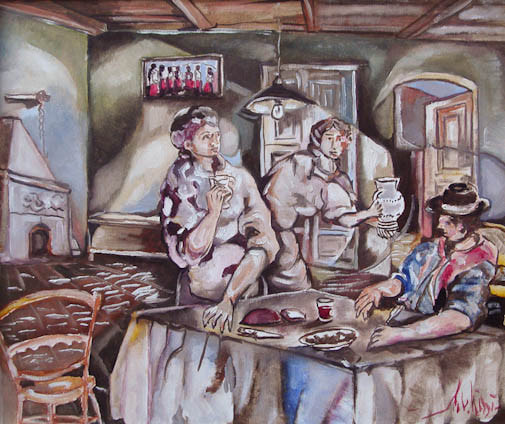
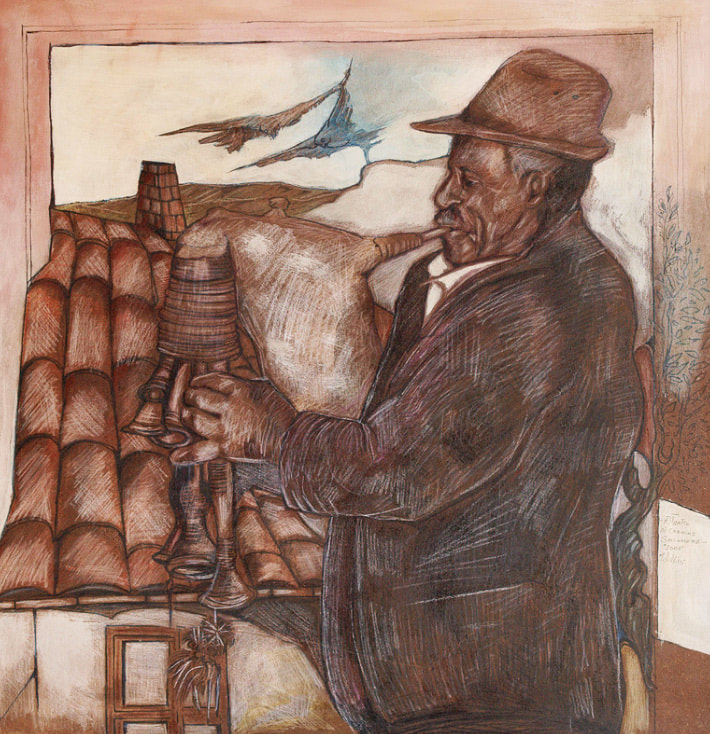
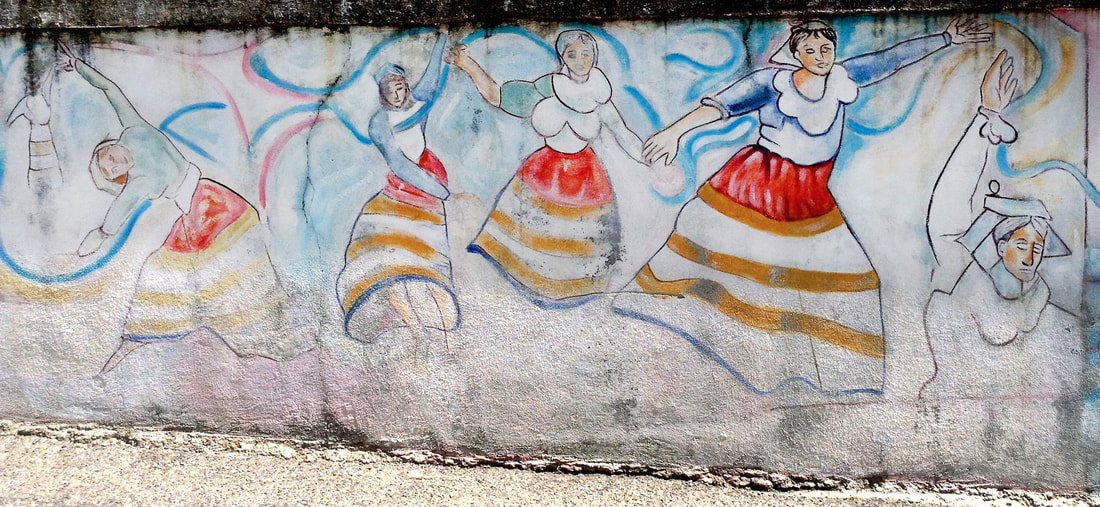
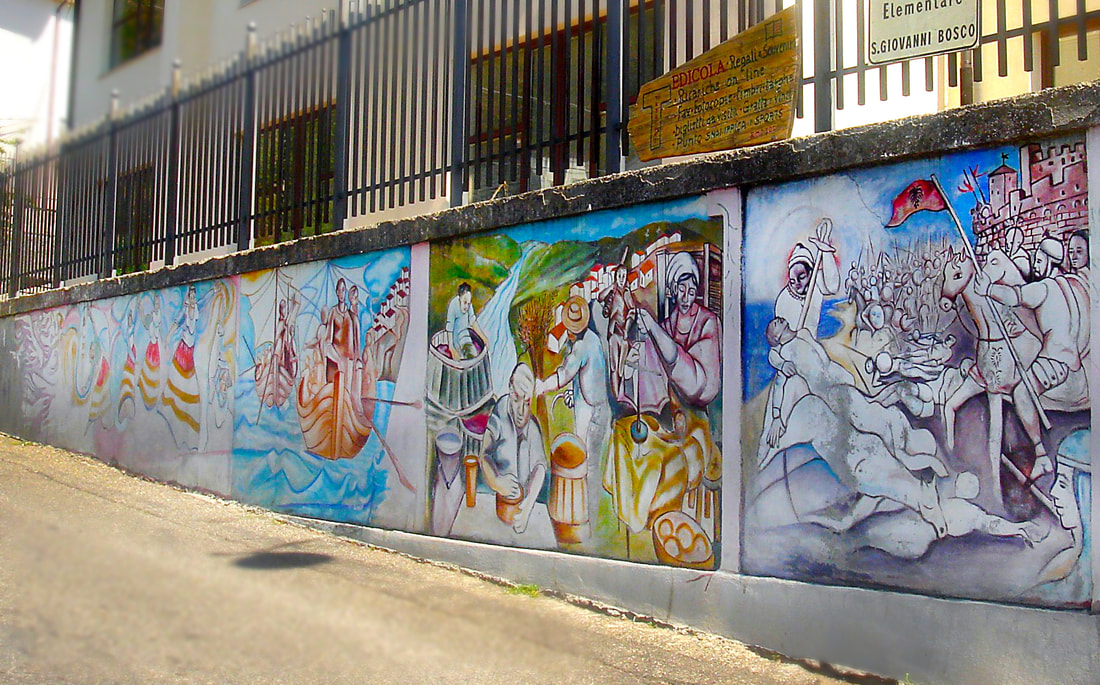
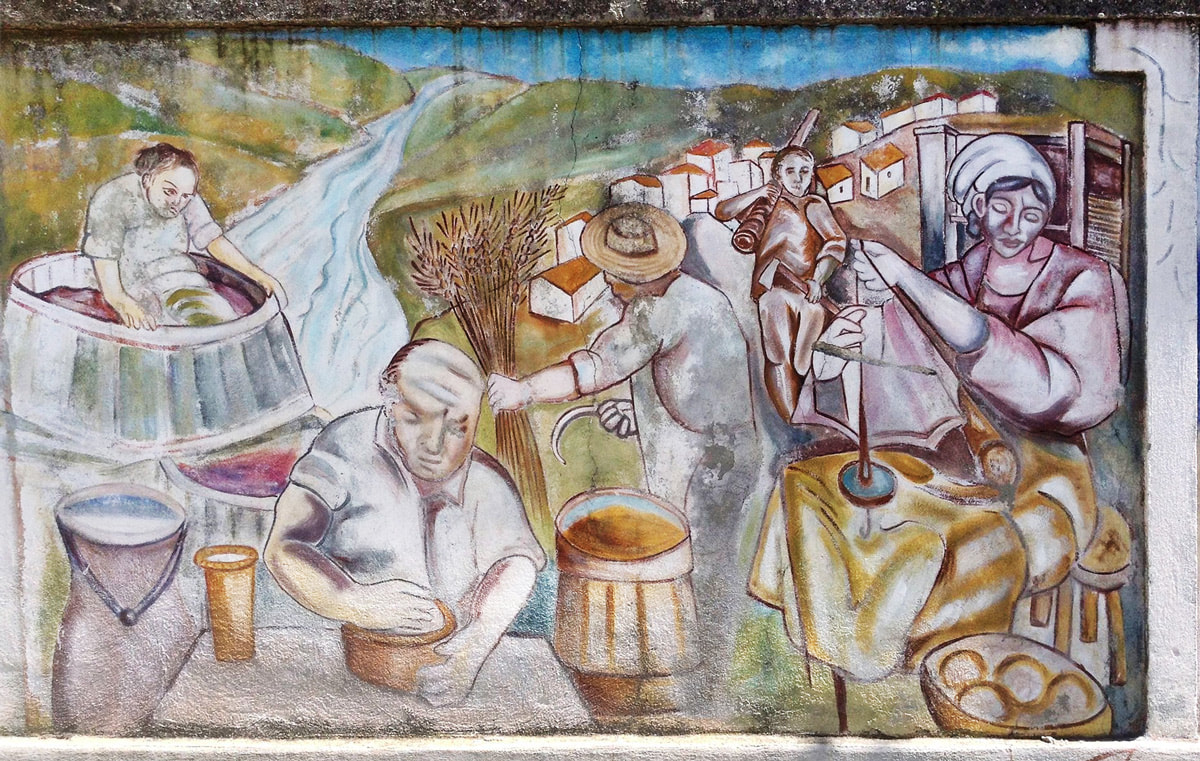
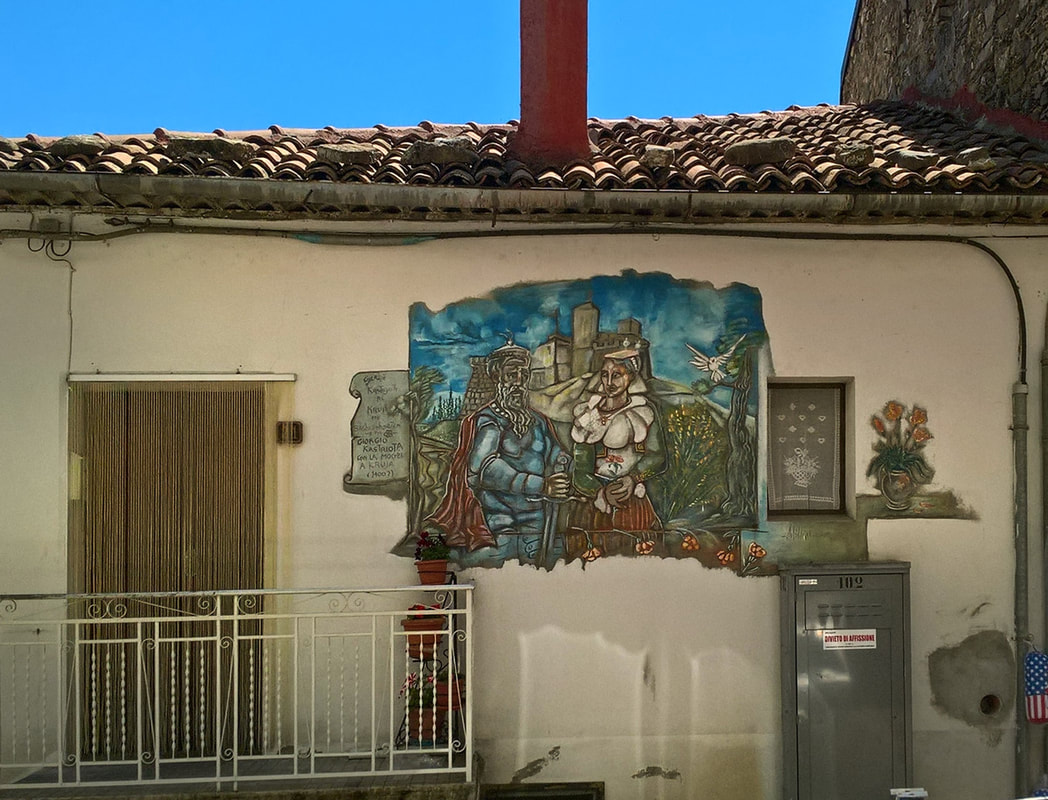
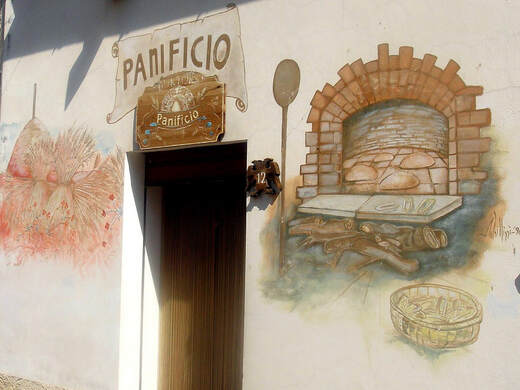
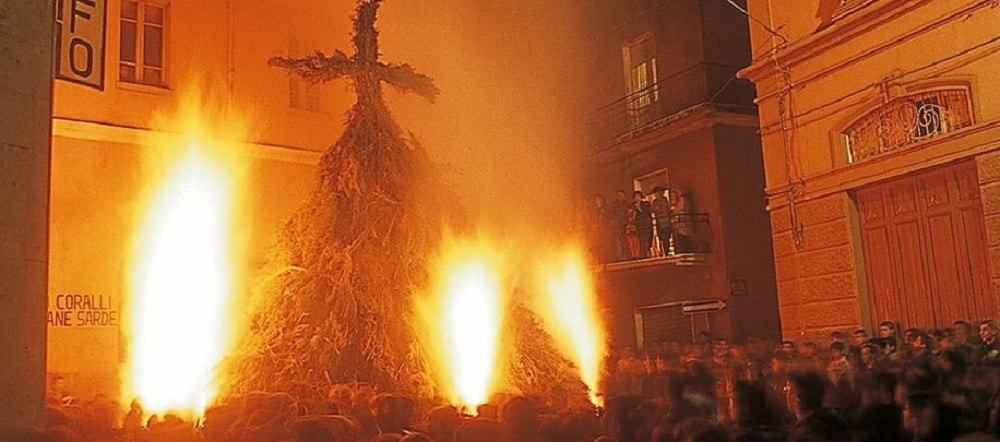
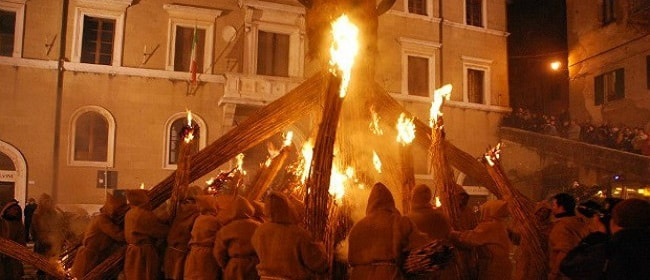
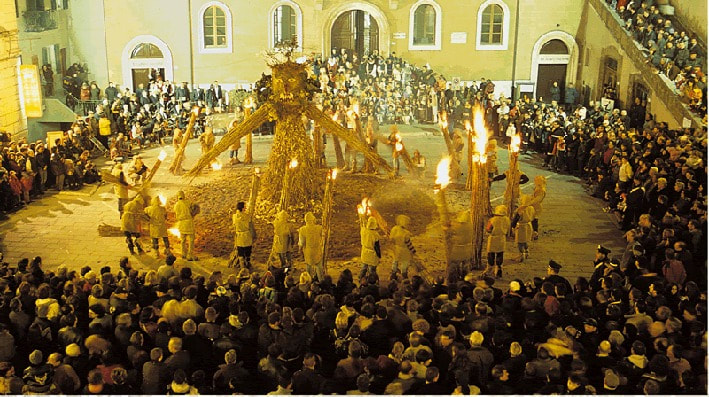
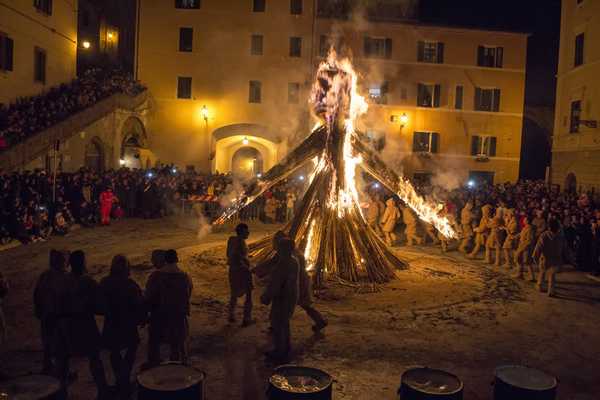
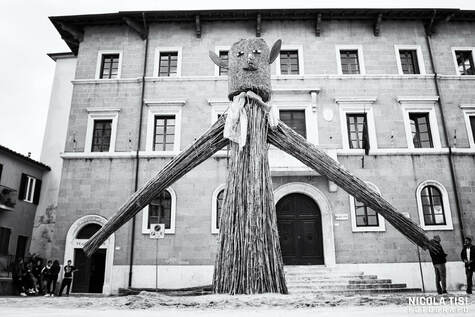
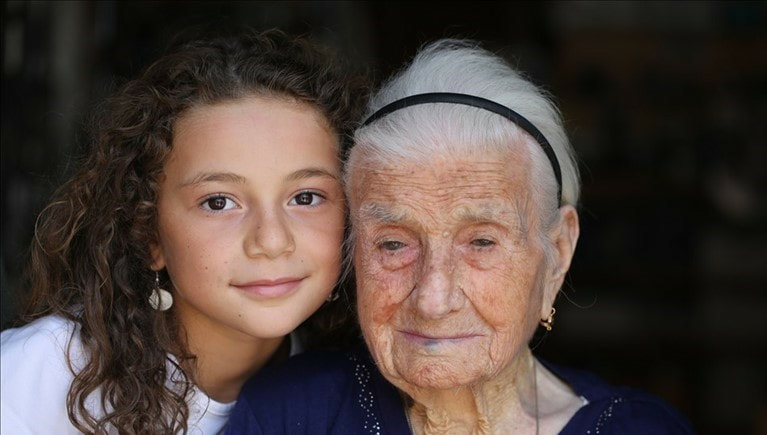
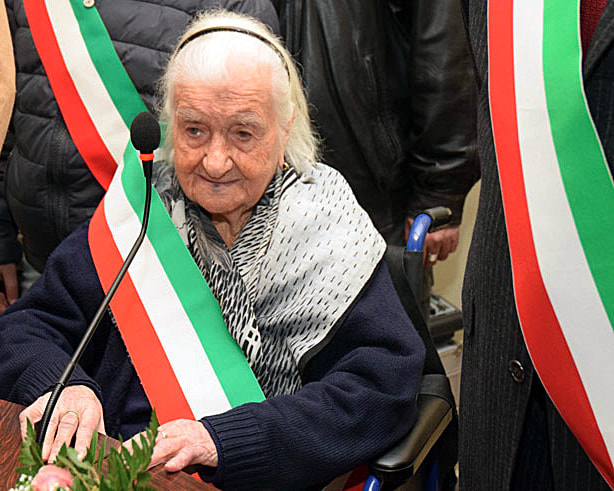
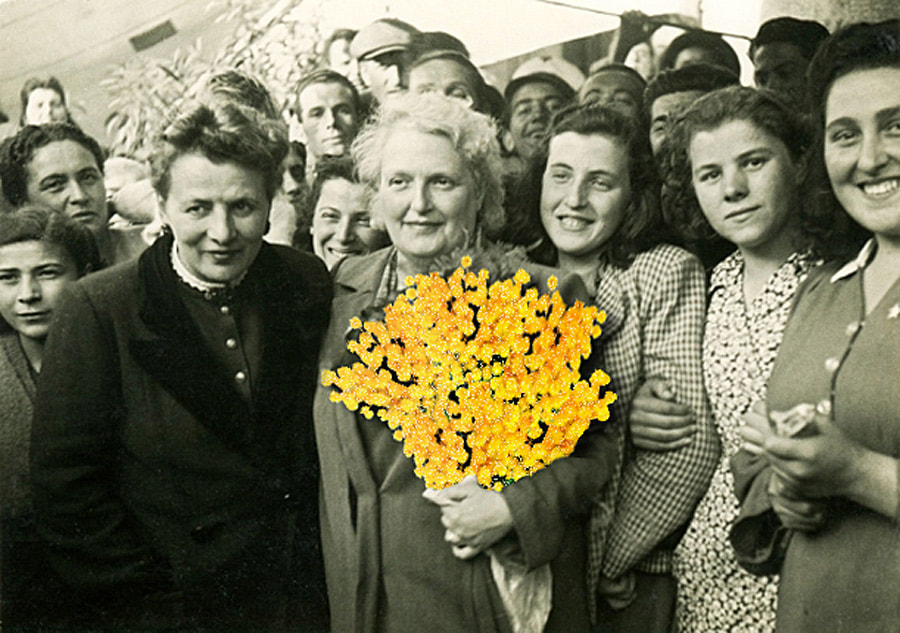
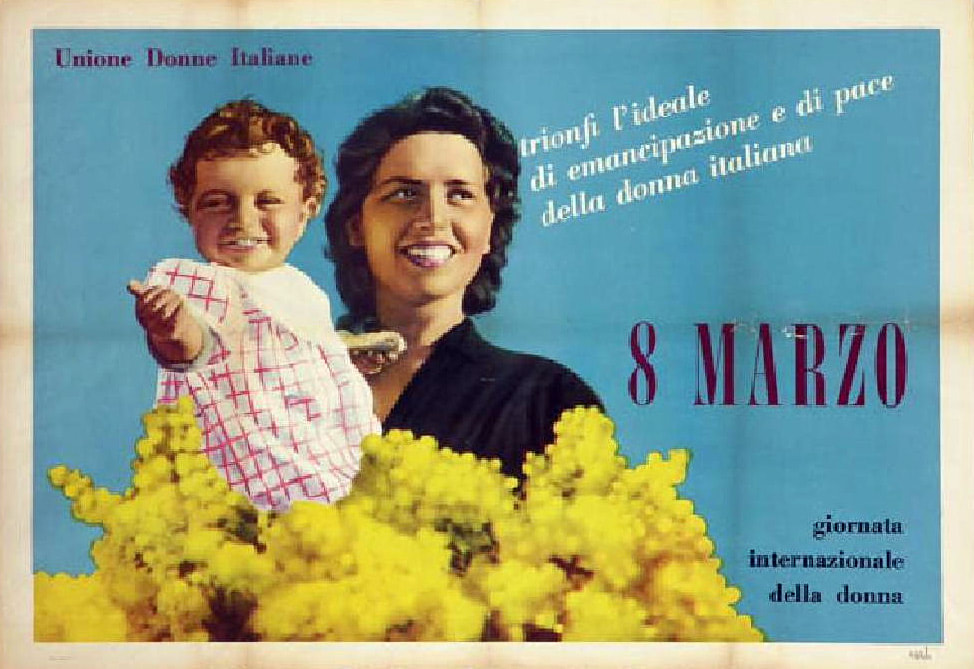
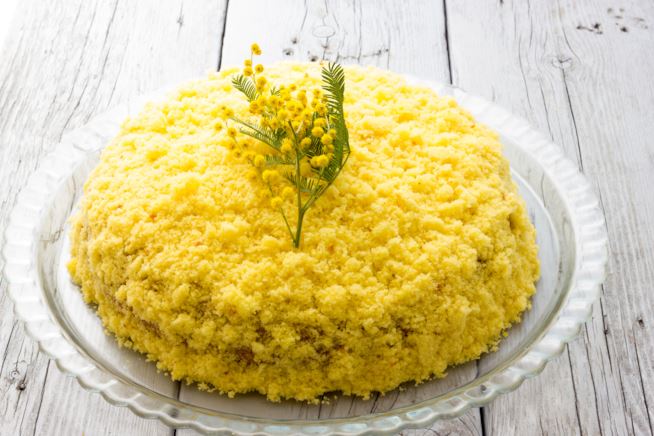
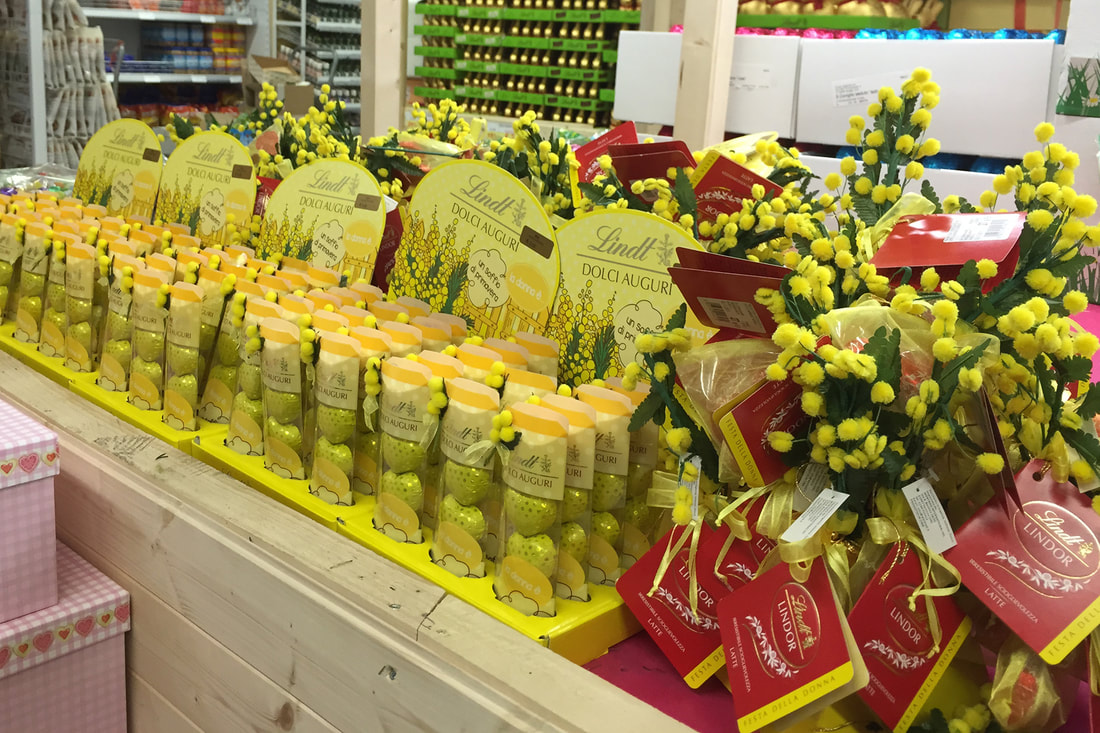
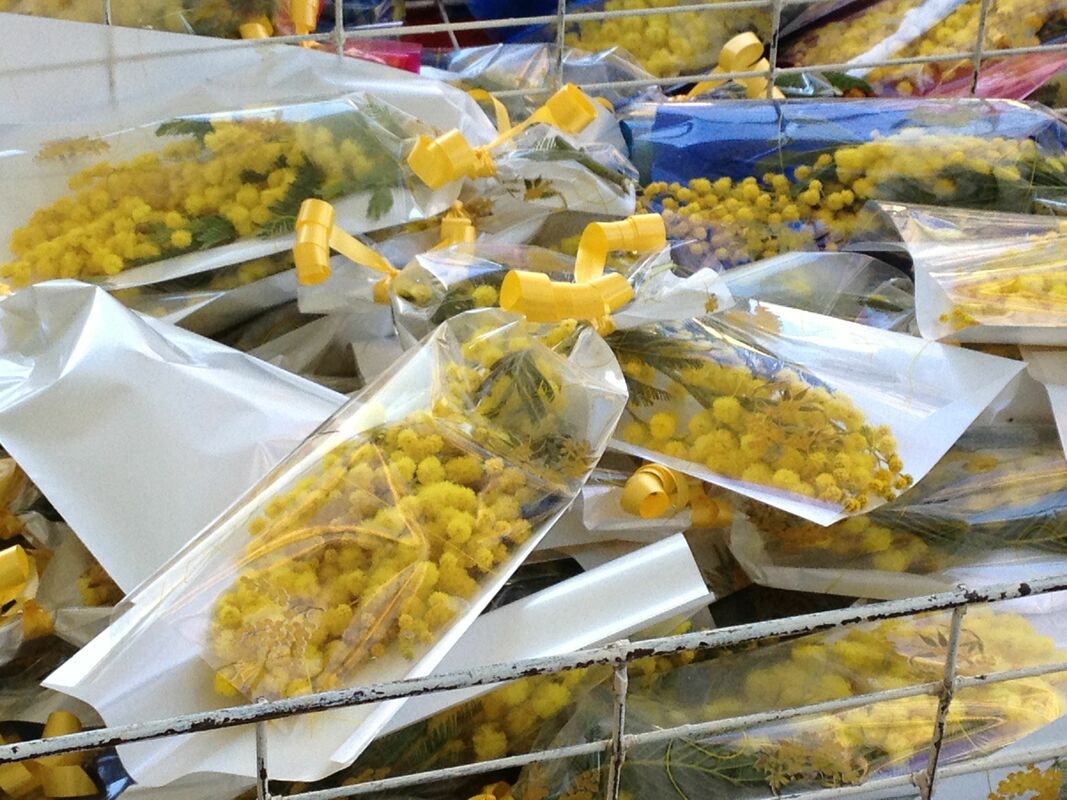


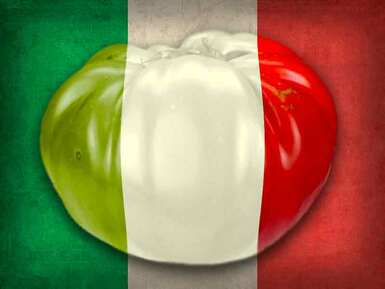
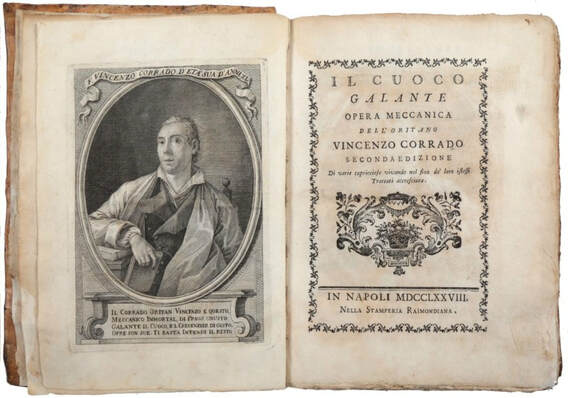

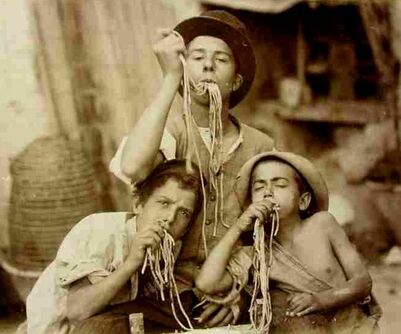
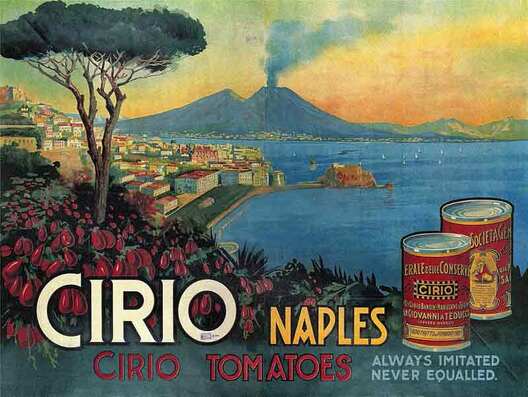
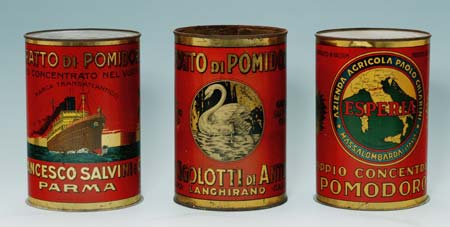

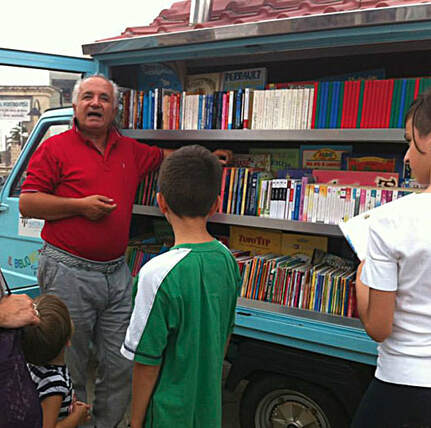


 RSS Feed
RSS Feed
